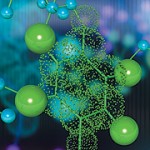 In my most recent entry, I noted that the National Academies would be releasing a report by the end of January that focuses on researching the health and safety aspects of nanotechnology. The report, A Research Strategy for Environmental, Health, and Safety Aspects of Engineered Nanomaterials, was released January 25 in prepublication (i.e. uncorrected) copy. A download, with significant restrictions, is available at http://www.nas.edu/catalog.php?record_id=13347
In my most recent entry, I noted that the National Academies would be releasing a report by the end of January that focuses on researching the health and safety aspects of nanotechnology. The report, A Research Strategy for Environmental, Health, and Safety Aspects of Engineered Nanomaterials, was released January 25 in prepublication (i.e. uncorrected) copy. A download, with significant restrictions, is available at http://www.nas.edu/catalog.php?record_id=13347
The study was initiated by EPA, which asked the National Research Council of the National Academies to conduct an independent study with the goal of developing a research strategy. The report sets forth a conceptual framework for research on the environmental, health, and safety impacts of engineered nanomaterials (ENMs).
The report explains why ENMs are difficult to place into a system of risk analysis. In this blog, I’ve discussed the fact that the tiny size of nanomaterials gives them characteristics and risks different from the same materials in larger dimensions. The report points out the vast diversity of characteristics of ENMs, as well as the fact that those characteristics may behave differently depending upon the environment in which the materials are located, including changing characteristics as the nanoparticles migrate. Furthermore, the uncertainty about risks in all sectors – among developers, regulators, and consumers – demands a uniform strategy for assessing risks. The report points out that little research has been done to date, notwithstanding the fact that even more complex ENMs will soon be available.
In other words, we needed a research protocol for identifying, analyzing, and managing the environmental, health, and safety hazards of ENMs yesterday.
One of the most significant points made in the report was the identification of “critical research gaps” that must be addressed. Examples of some of the gaps:
More is known about inhalation risks than other routes of exposure because of earlier research on the effects of particle inhalation on the human body.
Basic information is lacking on the chemical and physical properties of the ENMs currently out there.
Gaps in knowledge exist regarding how ENMs move through and interact with the human body and in the environment.
How research is conducted in the laboratory must be modified to provide accurate information about the risks. Standard testing protocols must be developed.
The report goes on, and in the months to come I will look at various aspects of the report in individual posts on this blog.
Consistent with its findings, the report recommended changing the structure of the National Nanotechnology Initiative (NNI), which is too vast and fragmented to be effective in the ways that are critical. The NNI’s authority covers essentially only coordination functions. The report recommends that the entity that manages and implements the report’s strategy be one with “top-down” management and budget authority over the research. This may not be the NNI at all. The report notes that the NNI’s objective of promoting the development and uses of nanomaterials may conflict with its role in identifying and appropriately managing the risks of the technology. Accordingly, the report recommends separating those objectives and restructuring the NNI.
It’s another beginning. The follow-up report, in which the committee promised to assess progress toward the goals set forth in this report, isn’t due for a couple of years. In the meantime, ENMs will continue to proliferate. My recommendation is that all sectors exercise all due caution until more is known.
 The National Academies have promised a report by the end of January 2012 on priorities (both short- and long-term) for studying the health, safety, and environmental effects of nanotechnology. According to the National Academies, this report will address the following matters: the properties of engineered nanomaterials; methods and technologies for “detecting, measuring, analyzing, and monitoring” engineered nanomaterials; what studies are needed; what testing methods need to be developed; the models for predicting impacts that should be developed; research priorities; and the criteria for evaluating research progress. In its “Statement of Task,” the National Research Council has explained:
The National Academies have promised a report by the end of January 2012 on priorities (both short- and long-term) for studying the health, safety, and environmental effects of nanotechnology. According to the National Academies, this report will address the following matters: the properties of engineered nanomaterials; methods and technologies for “detecting, measuring, analyzing, and monitoring” engineered nanomaterials; what studies are needed; what testing methods need to be developed; the models for predicting impacts that should be developed; research priorities; and the criteria for evaluating research progress. In its “Statement of Task,” the National Research Council has explained: An interesting and potentially revolutionary development in magnetic storage of data was announced a couple of weeks ago. Researchers at I.B.M. have reported the development of a new class of nanomaterials that could lead to the development of new, significantly smaller memory chips and disk drives that will both hold vast amounts of information and use less power than the current class of silicon chips. The report (Loth, Baumann, Lutz, Eigler, and Heinrich, Bistability in Atomic-Scale Antiferromagnets) appears in the journal Science at Vol. 335, no. 6065, pp. 196-99 (Jan. 13, 2012), and has been widely reported in the news media. There is much excitement over this development, both for its inherent promise for data storage and for its potential in other areas. Analysts have suggested that other new nanomaterials may be forthcoming using some of the same general methodologies and approaches of these researchers.
An interesting and potentially revolutionary development in magnetic storage of data was announced a couple of weeks ago. Researchers at I.B.M. have reported the development of a new class of nanomaterials that could lead to the development of new, significantly smaller memory chips and disk drives that will both hold vast amounts of information and use less power than the current class of silicon chips. The report (Loth, Baumann, Lutz, Eigler, and Heinrich, Bistability in Atomic-Scale Antiferromagnets) appears in the journal Science at Vol. 335, no. 6065, pp. 196-99 (Jan. 13, 2012), and has been widely reported in the news media. There is much excitement over this development, both for its inherent promise for data storage and for its potential in other areas. Analysts have suggested that other new nanomaterials may be forthcoming using some of the same general methodologies and approaches of these researchers. It had to happen sooner or later. And it’s happening now. A coalition of nonprofit consumer safety and environmental groups brought an action on December 21 in federal district court in California against the Food and Drug Administration (FDA). The action seeks an order for declaratory and injunctive relief under the Administrative Procedure Act to require the FDA to respond to a petition filed with the FDA in 2006 which sought action by the agency to assure the safety of the public exposed to nanomaterials, particularly sunscreen products. The requested relief is detailed on pages 3-4 of the petition. The lawsuit is International Center for Technology Assessment v. Hamburg (N.D. Calif., CV 11-6592).
It had to happen sooner or later. And it’s happening now. A coalition of nonprofit consumer safety and environmental groups brought an action on December 21 in federal district court in California against the Food and Drug Administration (FDA). The action seeks an order for declaratory and injunctive relief under the Administrative Procedure Act to require the FDA to respond to a petition filed with the FDA in 2006 which sought action by the agency to assure the safety of the public exposed to nanomaterials, particularly sunscreen products. The requested relief is detailed on pages 3-4 of the petition. The lawsuit is International Center for Technology Assessment v. Hamburg (N.D. Calif., CV 11-6592). The National Institute of Standards and Technology (NIST) has issued what is being touted as the world’s first reference material for single-wall carbon nanotube soot. In its statement, NIST calls single-wall carbon nanotubes (SWCNT) “perhaps the archetype of all nanoscale materials.” The promise of SWCNT in industrial use is great (NIST chemical engineer Jeffrey Fagan stated that “full development of these materials should enable lighter, stronger materials, as well as improve many technologies from sensors to electronics and batteries”). But as with most things, there’s a catch.
The National Institute of Standards and Technology (NIST) has issued what is being touted as the world’s first reference material for single-wall carbon nanotube soot. In its statement, NIST calls single-wall carbon nanotubes (SWCNT) “perhaps the archetype of all nanoscale materials.” The promise of SWCNT in industrial use is great (NIST chemical engineer Jeffrey Fagan stated that “full development of these materials should enable lighter, stronger materials, as well as improve many technologies from sensors to electronics and batteries”). But as with most things, there’s a catch. For those of you who are following this blog, I’ll apologize for letting nearly two months slip away since the previous post. The reason has to do with my co-blogger, Eric Laury. After passing both the Pennsylvania and New Jersey bar exams, Eric took a job in a law firm in Denver, which means he is now studying for the Colorado bar exam. I have every reason to believe that Eric will resume writing for this blog after things settled down for him, but likely as an occasional blogger. I congratulate him on his success and look forward to our continued collaboration.
For those of you who are following this blog, I’ll apologize for letting nearly two months slip away since the previous post. The reason has to do with my co-blogger, Eric Laury. After passing both the Pennsylvania and New Jersey bar exams, Eric took a job in a law firm in Denver, which means he is now studying for the Colorado bar exam. I have every reason to believe that Eric will resume writing for this blog after things settled down for him, but likely as an occasional blogger. I congratulate him on his success and look forward to our continued collaboration. It’s been a long time coming, but the European Commission published its definition of nanomaterials on October 18, 2011. Though not binding on EU member countries, this is a major step toward the use of a uniform definition throughout the EU and – who knows? – elsewhere in the world. The Commission adopted the following previously recommended definition of “nanomaterial”:
It’s been a long time coming, but the European Commission published its definition of nanomaterials on October 18, 2011. Though not binding on EU member countries, this is a major step toward the use of a uniform definition throughout the EU and – who knows? – elsewhere in the world. The Commission adopted the following previously recommended definition of “nanomaterial”:
